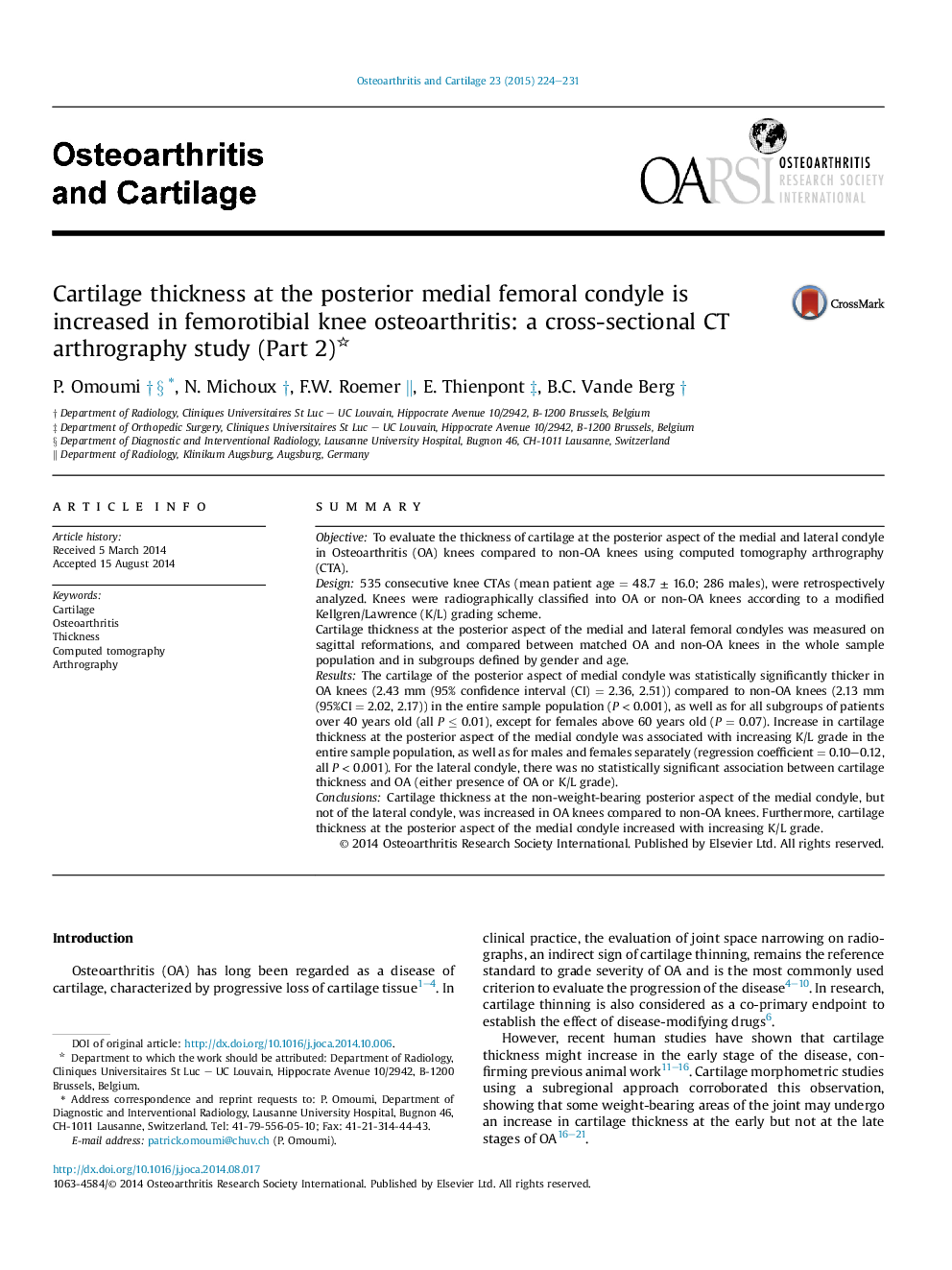| Article ID | Journal | Published Year | Pages | File Type |
|---|---|---|---|---|
| 3379189 | Osteoarthritis and Cartilage | 2015 | 8 Pages |
SummaryObjectiveTo evaluate the thickness of cartilage at the posterior aspect of the medial and lateral condyle in Osteoarthritis (OA) knees compared to non-OA knees using computed tomography arthrography (CTA).Design535 consecutive knee CTAs (mean patient age = 48.7 ± 16.0; 286 males), were retrospectively analyzed. Knees were radiographically classified into OA or non-OA knees according to a modified Kellgren/Lawrence (K/L) grading scheme.Cartilage thickness at the posterior aspect of the medial and lateral femoral condyles was measured on sagittal reformations, and compared between matched OA and non-OA knees in the whole sample population and in subgroups defined by gender and age.ResultsThe cartilage of the posterior aspect of medial condyle was statistically significantly thicker in OA knees (2.43 mm (95% confidence interval (CI) = 2.36, 2.51)) compared to non-OA knees (2.13 mm (95%CI = 2.02, 2.17)) in the entire sample population (P < 0.001), as well as for all subgroups of patients over 40 years old (all P ≤ 0.01), except for females above 60 years old (P = 0.07). Increase in cartilage thickness at the posterior aspect of the medial condyle was associated with increasing K/L grade in the entire sample population, as well as for males and females separately (regression coefficient = 0.10–0.12, all P < 0.001). For the lateral condyle, there was no statistically significant association between cartilage thickness and OA (either presence of OA or K/L grade).ConclusionsCartilage thickness at the non-weight-bearing posterior aspect of the medial condyle, but not of the lateral condyle, was increased in OA knees compared to non-OA knees. Furthermore, cartilage thickness at the posterior aspect of the medial condyle increased with increasing K/L grade.
